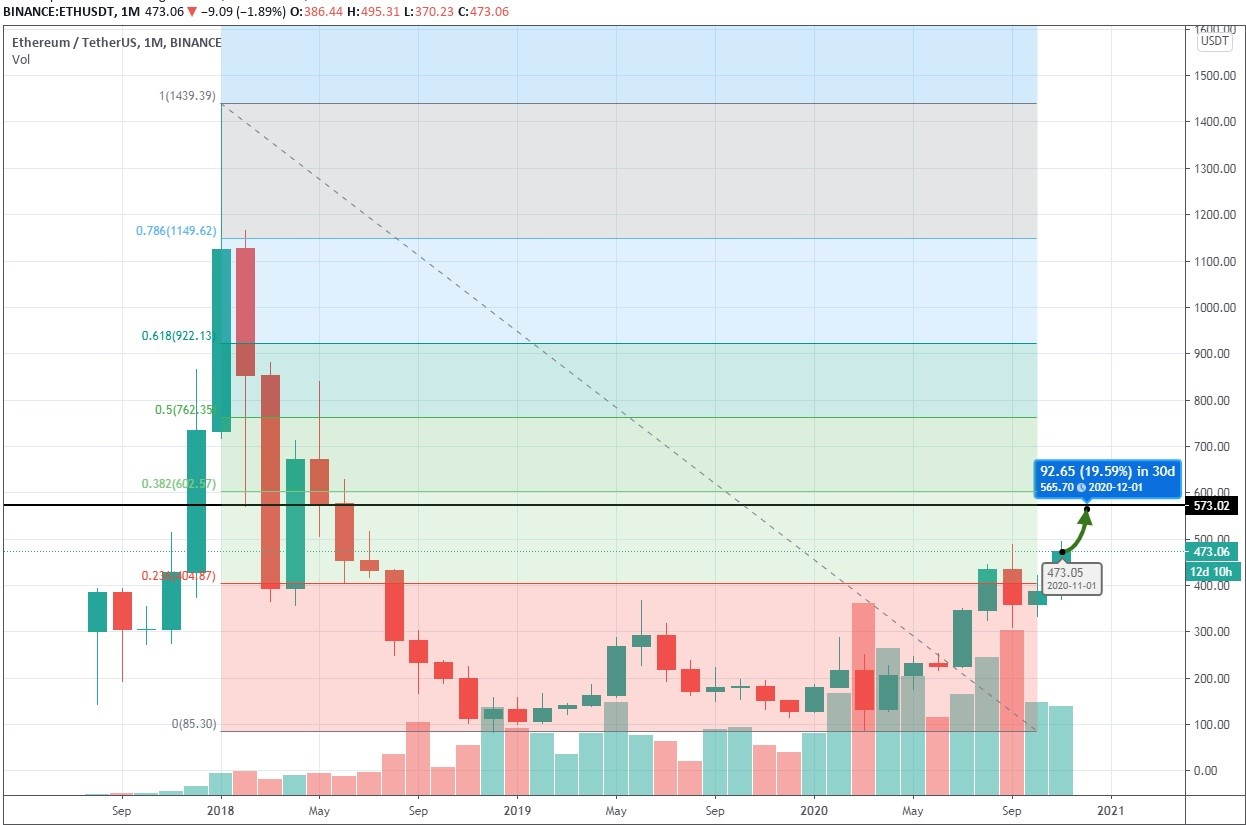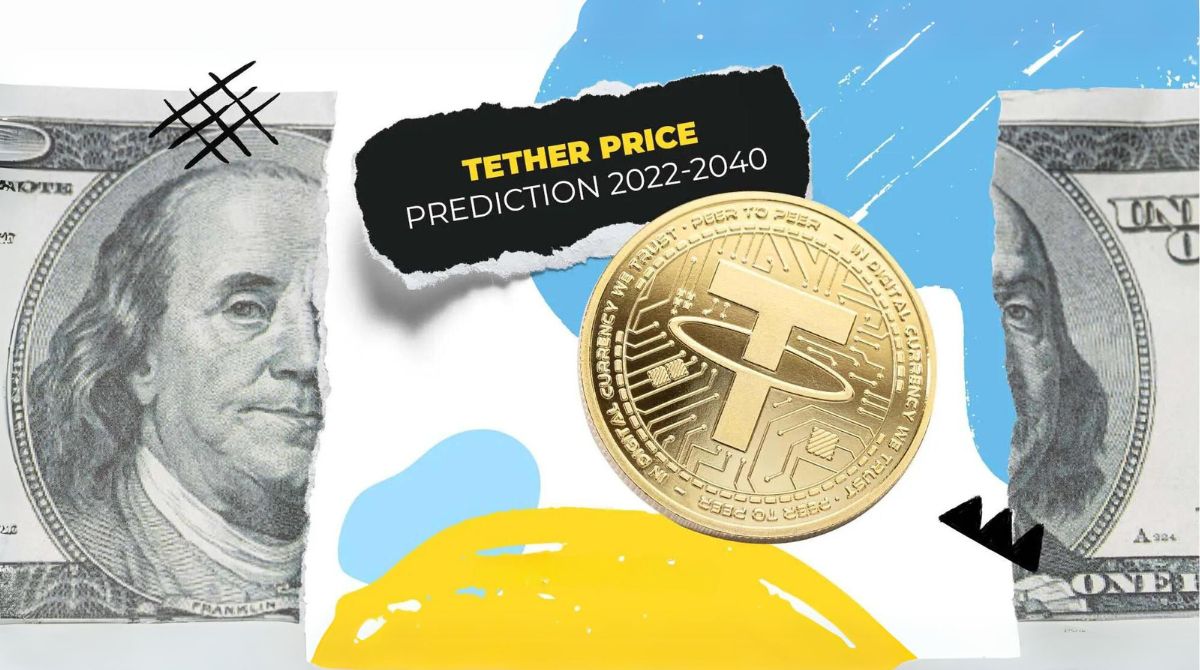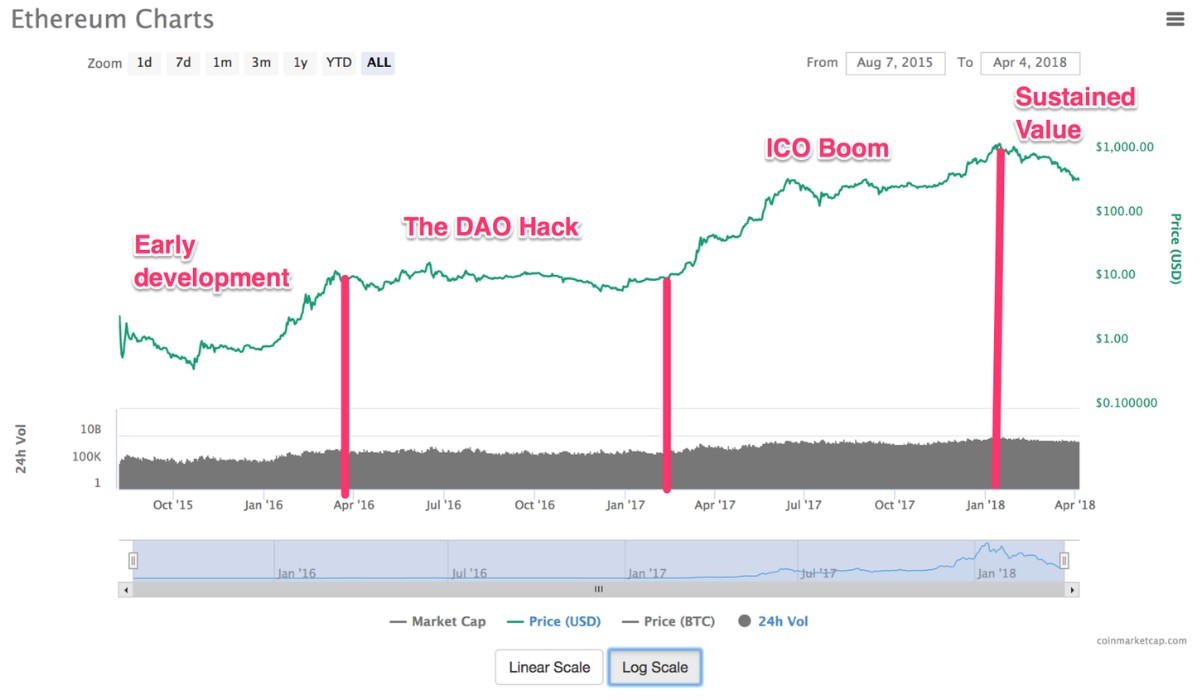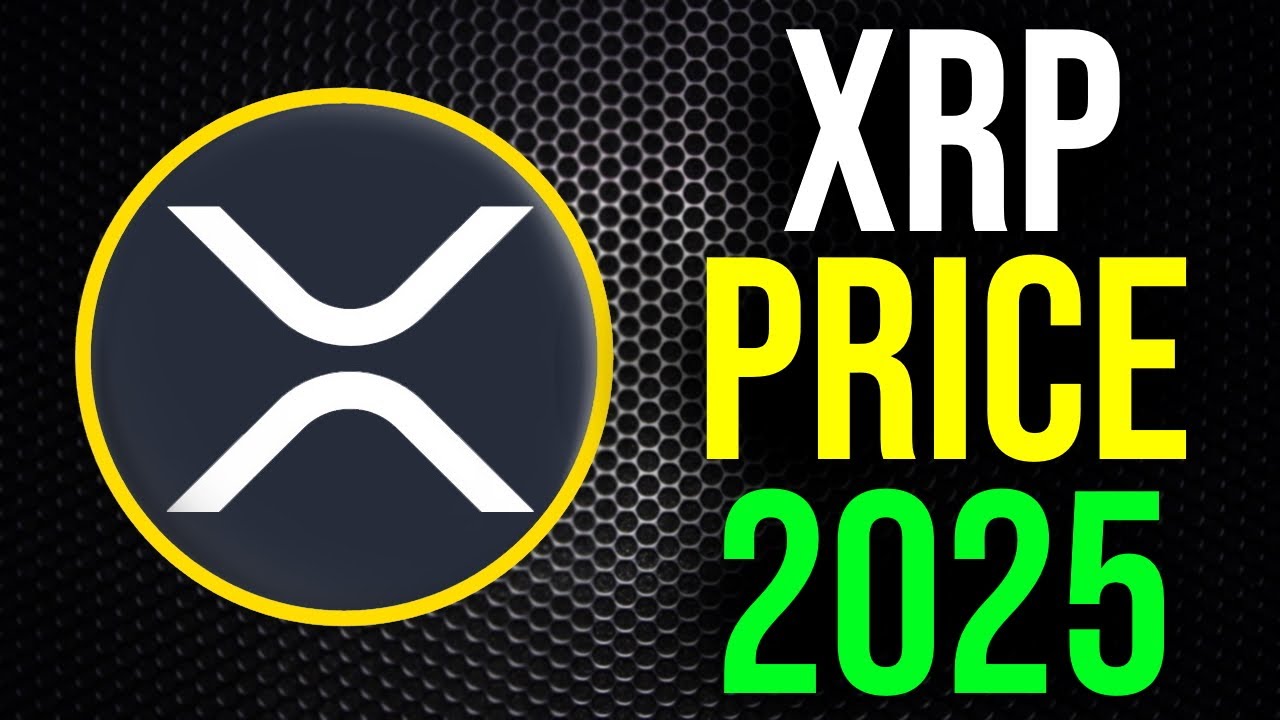Introduction
As the popularity of cryptocurrency continues to soar, Ethereum has emerged as one of the leading players in the market. Launched in 2015, Ethereum is not only a digital currency but also a decentralized platform for building various applications. Its unique features, such as smart contracts and decentralized finance (DeFi) applications, have made it a favorite among developers and investors alike.
Ethereum’s value, like any other cryptocurrency, is influenced by a myriad of factors. These include market demand, technological advancements, regulatory developments, and adoption by mainstream institutions. Investors and analysts are constantly monitoring these factors to make predictions about the future value of Ethereum.
In this article, we will explore the current state of Ethereum and delve into expert predictions on its value in 2025. Additionally, we will discuss potential scenarios that could shape Ethereum’s future and its role in the evolving landscape of finance.
Before delving into these predictions and scenarios, let’s take a closer look at Ethereum’s current state.
Factors Affecting the Value of Ethereum
The value of Ethereum is influenced by a variety of factors that can impact its price in the market. Understanding these factors can help investors and enthusiasts gain insights into the potential future value of Ethereum. Here are some key factors to consider:
- Market Demand: The demand for Ethereum plays a significant role in determining its value. If there is high demand from users, investors, and institutions, the price of Ethereum is likely to increase. Factors that can drive demand include increased adoption of Ethereum-based applications, growing interest in decentralized finance, and broader acceptance of cryptocurrencies.
- Technological Advancements: Ethereum’s value is closely tied to its technological advancements. Improvements in scalability, security, and the development of new features and upgrades can significantly impact the perception and value of Ethereum. For example, the upcoming Ethereum 2.0 upgrade, which aims to address scalability issues, could have a positive effect on the value of Ethereum if successfully implemented.
- Regulatory Environment: The regulatory landscape surrounding cryptocurrencies can have a profound impact on their value. Favorable regulations that provide clarity and support for cryptocurrencies like Ethereum can attract more investors and institutions, leading to increased demand and higher prices. Conversely, strict regulations or negative perceptions from regulators can dampen the value of Ethereum.
- Mainstream Adoption: As Ethereum gains wider acceptance and adoption in mainstream industries, its value is likely to increase. Partnerships and collaborations with established companies, integration into existing financial systems, and the creation of user-friendly applications can pave the way for broader acceptance of Ethereum, driving up its value in the long run.
- Competition: Ethereum faces competition from other blockchain platforms that offer similar features and functionalities. The presence of strong competitors can impact the perceived value of Ethereum. It is crucial for Ethereum to continue innovating and distinguishing itself from its competitors to maintain and increase its value in the market.
- Macroeconomic Factors: Economic conditions and market trends can also influence the value of Ethereum. Factors such as inflation, economic stability, and global financial events can impact investor sentiment towards cryptocurrencies, including Ethereum.
These factors, along with others, contribute to the overall value and price fluctuations of Ethereum. It is important to note that the cryptocurrency market is highly volatile, and the value of Ethereum can be subject to rapid and substantial changes based on these factors.
Now that we have explored the factors that influence Ethereum’s value, let’s examine its current state and market performance in more detail.
Current State of Ethereum
Ethereum has established itself as one of the most prominent cryptocurrencies in the market. It is the second-largest cryptocurrency by market capitalization, next only to Bitcoin.
One of the key features that sets Ethereum apart is its ability to support smart contracts. These self-executing contracts automatically execute when specific conditions encoded within them are met. This has unlocked a world of possibilities for developers, allowing them to create decentralized applications (DApps) and decentralized autonomous organizations (DAOs) on the Ethereum blockchain.
Currently, Ethereum is powered by a proof-of-work (PoW) consensus mechanism, similar to Bitcoin. However, a major upgrade, known as Ethereum 2.0 or ETH2, is on the horizon. This upgrade aims to transition Ethereum from a PoW to a proof-of-stake (PoS) consensus algorithm, making the network more efficient, scalable, and sustainable.
Despite its many strengths, Ethereum does face some challenges. One of the primary concerns is its scalability. As more DApps and users join the Ethereum network, congestion and high transaction fees can occur, affecting the overall user experience and adoption.
Nevertheless, Ethereum continues to attract significant attention from both individual investors and institutional players. The growing popularity of decentralized finance (DeFi) has been a major catalyst for Ethereum’s success. DeFi applications built on Ethereum offer various financial services, including lending, borrowing, and yield farming, without the need for intermediaries.
In recent years, Ethereum has also gained support from major companies and financial institutions. This support has ranged from partnerships and collaborations to the adoption of Ethereum-based technologies. These developments have helped solidify Ethereum’s position in the cryptocurrency market and enhance its credibility.
Furthermore, Ethereum has established itself as a prominent platform for Initial Coin Offerings (ICOs) and token sales. Many blockchain projects choose to build their tokens and conduct their fundraising activities on the Ethereum blockchain.
Overall, the current state of Ethereum is characterized by its strong position in the market, its innovative smart contract capabilities, and its growing adoption in the DeFi space. However, scalability concerns and competition from other blockchain platforms continue to be areas of focus for the Ethereum community.
Now that we have a better understanding of the current state of Ethereum, let’s explore what experts predict for its value in 2025.
Expert Predictions on Ethereum Value in 2025
Experts have varying opinions on the future value of Ethereum in 2025. While it is challenging to predict with certainty how the market will evolve, these predictions provide insights into the potential growth and value of Ethereum in the coming years.
Some experts believe that Ethereum has the potential to reach new heights in terms of value by 2025. They argue that the continued adoption of Ethereum-based technologies, such as DeFi and non-fungible tokens (NFTs), will contribute to increased demand for the cryptocurrency. As more users and institutions recognize the benefits of Ethereum’s smart contract capabilities and decentralized applications, its value is expected to rise significantly.
Others predict a more conservative growth trajectory for Ethereum. They acknowledge the potential of Ethereum but also emphasize the importance of addressing its scalability issues and competition from other blockchain platforms. These experts believe that if Ethereum can overcome these challenges and maintain its position as a leading blockchain platform, its value in 2025 could be substantial, but perhaps not as exponential as some optimists suggest.
A common theme among experts is that Ethereum’s value is closely tied to the overall growth and maturity of the cryptocurrency market. As the market continues to evolve and gain wider acceptance, Ethereum’s value is expected to reflect this trend. Factors such as regulatory developments, key partnerships and collaborations, and advancements in blockchain technology as a whole will also influence Ethereum’s value in the long run.
It is worth noting that these are just predictions and should be taken with a grain of salt. The cryptocurrency market is inherently volatile and subject to numerous external factors that can impact prices. Investors and enthusiasts should conduct thorough research and analysis before making any investment decisions.
In summary, expert predictions on the value of Ethereum in 2025 span a range of possibilities. While some envision significant growth, others believe that overcoming challenges and continued market maturation will lead to more modest yet still substantial value appreciation. Ultimately, the future value of Ethereum will depend on various factors, including technological advancements, market demand, regulatory developments, and competition.
Now, let’s explore potential scenarios for Ethereum in 2025.
Potential Scenarios for Ethereum in 2025
Looking ahead to 2025, there are several potential scenarios that could shape the future of Ethereum. While these scenarios are speculative, they provide insights into the various paths Ethereum might take in the coming years.
Scenario 1: Ethereum Becomes the Dominant Platform
In this scenario, Ethereum solidifies its position as the leading blockchain platform, surpassing its competitors in terms of popularity, adoption, and market capitalization. The success of Ethereum-based applications, particularly in the DeFi and NFT sectors, propels the platform to new heights. As a result, Ethereum becomes the go-to platform for developers, investors, and institutions, leading to increased demand for Ether (ETH) and a surge in its value.
Scenario 2: Competing Blockchain Platforms Emerge
An alternative scenario is that competing blockchain platforms gain traction and pose a significant challenge to Ethereum’s dominance. These platforms may offer improved scalability, enhanced features, or unique use cases that attract developers and users away from Ethereum. As a result, Ethereum faces increased competition, which could potentially impact its market share and value. However, Ethereum’s strong foundation, loyal community, and continuous innovation could enable it to maintain a considerable share of the market and remain relevant in this scenario.
Scenario 3: Integration with Traditional Finance
In this scenario, Ethereum successfully integrates with traditional finance systems and establishes itself as a bridge between the traditional and digital financial worlds. Mainstream financial institutions, such as banks and asset management firms, embrace Ethereum’s technology and infrastructure, leading to increased adoption and confidence in the platform. This integration could potentially drive up the value of Ethereum as it becomes a crucial part of the global financial ecosystem.
Scenario 4: Regulatory Challenges Stifle Growth
An unfavorable regulatory environment and increased scrutiny from authorities can hinder Ethereum’s growth and adoption. Stringent regulations or restrictions placed on cryptocurrencies could create uncertainties and deter investors and institutions from engaging with Ethereum. In this scenario, the value of Ethereum may face downward pressure, and its progress could be hampered as the regulatory landscape evolves.
It’s important to note that these scenarios are hypothetical and intended to provide different perspectives on Ethereum’s future. The actual outcome will likely be a combination of various factors and circumstances.
Now, let’s delve into the role that Ethereum is expected to play in the future of finance.
Ethereum’s Role in the Future of Finance
Ethereum is poised to play a pivotal role in the future of finance, thanks to its innovative features and decentralized nature. Here are some key ways in which Ethereum is expected to shape the future of finance:
1. Decentralized Finance (DeFi): Ethereum has emerged as a prominent platform for DeFi applications, offering decentralized lending, borrowing, and trading options, among others. DeFi has the potential to disrupt traditional financial systems by providing open, permissionless, and trustless access to financial services. As the adoption of DeFi continues to grow, Ethereum will remain at the forefront of this transformation, facilitating new financial opportunities for individuals and institutions globally.
2. Smart Contracts: Ethereum’s smart contract capabilities enable the automation and execution of agreements without intermediaries. This has significant implications for finance, as it allows for the seamless creation and enforcement of complex financial instruments such as derivatives, insurance policies, and decentralized exchanges. Smart contracts on Ethereum can increase transparency, reduce costs, and streamline financial processes, ultimately revolutionizing how financial agreements are conducted.
3. Tokenization: Ethereum enables the tokenization of assets, enabling the representation of real-world assets, such as real estate, stocks, and artwork, as digital tokens on the blockchain. This opens up new avenues for fractional ownership and liquidity, enabling the efficient trading and transfer of assets. Tokenization has the potential to democratize access to previously illiquid assets, making financial markets more inclusive and efficient.
4. Cross-Border Payments: Ethereum’s global reach and decentralized nature make it well-suited for facilitating cross-border payments. By eliminating intermediaries and leveraging blockchain technology, Ethereum can offer faster, cheaper, and more secure international transactions compared to traditional payment systems. With increased adoption and infrastructure development, Ethereum could become a foundation for cross-border payment networks, enabling seamless peer-to-peer transactions around the world.
5. Financial Inclusion: Ethereum has the potential to bring financial services to the unbanked and underbanked populations worldwide. Through decentralized applications and digital wallets, individuals without access to traditional banking infrastructure can securely store, transfer, and borrow funds using cryptocurrencies built on the Ethereum network. This can empower individuals in emerging economies and marginalized communities, fostering financial inclusion and economic growth.
6. Stablecoins: Ethereum facilitates the creation and use of stablecoins, which are cryptocurrencies pegged to the value of a stable asset, like fiat currency. Stablecoins offer the benefits of blockchain technology while minimizing price volatility, making them suitable for everyday transactions and hedging against market fluctuations. As the use of stablecoins grows, Ethereum will provide the underlying infrastructure for their issuance, transfer, and interoperability.
Ethereum’s innovative capabilities and its ever-growing ecosystem position it as a significant player in shaping the future of finance. However, challenges such as scalability, regulatory compliance, and security must be addressed for Ethereum to achieve its full potential in revolutionizing the financial landscape.
Now, let’s examine the impact of technological advancements on Ethereum’s future value.
Impact of Technological Advancements on Ethereum’s Worth
Technological advancements play a crucial role in shaping the worth of Ethereum, as they contribute to the platform’s functionality, scalability, security, and overall value proposition. Let’s explore some key technological advancements and their potential impact on Ethereum’s worth:
1. Ethereum 2.0 Upgrade: The Ethereum 2.0 upgrade, also known as ETH2 or Serenity, is a major development that aims to improve Ethereum’s scalability, efficiency, and security. It involves transitioning from the current proof-of-work (PoW) consensus mechanism to a proof-of-stake (PoS) mechanism. By implementing sharding and introducing the Beacon Chain, Ethereum 2.0 aims to increase the network’s capacity and reduce transaction costs, making it more attractive to users and developers. Successful implementation of Ethereum 2.0 could significantly boost Ethereum’s worth by addressing scalability concerns and enhancing its overall performance.
2. Layer 2 Solutions: Layer 2 solutions, such as state channels and sidechains, aim to alleviate the scalability issues faced by Ethereum. These solutions enable off-chain transactions and computational processes while still benefiting from the security and decentralization of the Ethereum mainnet. By reducing congestion and improving transaction speed and cost-efficiency, layer 2 solutions can enhance the overall user experience and attract more users and developers to the Ethereum ecosystem. The integration and adoption of layer 2 solutions could have a positive impact on Ethereum’s worth by increasing its utility and scalability.
3. Interoperability with Other Blockchains: The ability of Ethereum to seamlessly interact and interoperate with other blockchains can expand its use cases and utility, ultimately affecting its worth. Initiatives like cross-chain bridges and interoperability protocols enable the transfer of assets and information between different blockchain networks. By facilitating interoperability, Ethereum can tap into the value and liquidity of other ecosystems, opening up new possibilities for decentralized applications, DeFi, and other use cases. Increased interoperability can attract more users and assets to Ethereum, driving up its worth as a key hub of decentralized finance and innovation.
4. Privacy Enhancements: Privacy is an essential aspect of financial transactions, and advancements in privacy-focused technologies can elevate Ethereum’s worth. Techniques such as zero-knowledge proofs and secure multiparty computations enable privacy and confidentiality on the Ethereum blockchain. Implementing robust privacy enhancements can attract users and institutions concerned about protecting their financial information and transactions. Improved privacy features can enhance Ethereum’s appeal and contribute to its worth by expanding its use cases to industries that require a high level of privacy, such as healthcare and finance.
5. Enhanced Developer Tooling: Streamlined developer tooling and improved developer experience can increase the number of applications and projects built on the Ethereum blockchain. Frameworks, development kits, and user-friendly interfaces enable developers to create innovative and user-centric decentralized applications more efficiently. A vibrant ecosystem with a wide range of applications and projects can attract users, investors, and institutions, increasing the demand for Ethereum and its worth in the market.
These technological advancements and others not mentioned here will continue to shape Ethereum’s worth in the future. It is important to note that the successful implementation and adoption of these advancements require collaboration, community support, and ongoing research and development efforts. The evolution of Ethereum’s technology will play a critical role in determining its worth and potential for growth in the ever-changing landscape of blockchain and cryptocurrencies.
Now, let’s conclude this exploration of Ethereum’s worth and its future implications in the financial world.
Conclusion
Ethereum has established itself as a leading player in the cryptocurrency market, offering unique features such as smart contracts and decentralized applications. The value of Ethereum is influenced by several factors, including market demand, technological advancements, regulation, mainstream adoption, competition, and macroeconomic conditions.
Expert predictions on the value of Ethereum in 2025 can vary, with some foreseeing exponential growth and others suggesting more modest yet significant appreciation. The future value of Ethereum will depend on various factors, such as the continued development and adoption of Ethereum-based technologies, regulatory developments, and competition from other blockchain platforms.
Potential scenarios for Ethereum in 2025 include Ethereum becoming the dominant platform, the emergence of competing blockchain platforms, integration with traditional finance, and the impact of regulatory challenges. These scenarios provide different perspectives on the potential paths Ethereum might take in the coming years.
Ethereum is expected to play a pivotal role in the future of finance. Its capabilities in decentralized finance, smart contracts, tokenization, cross-border payments, financial inclusion, and stablecoins position it as a transformative force in the financial industry. However, challenges such as scalability and regulatory compliance need to be addressed for Ethereum to fulfill its potential and shape the future of finance effectively.
Technological advancements, such as the Ethereum 2.0 upgrade, layer 2 solutions, interoperability, privacy enhancements, and enhanced developer tooling, will impact Ethereum’s worth by addressing scalability concerns, improving user experience, expanding use cases, and attracting more users and developers to the platform.
In conclusion, Ethereum’s current state, expert predictions, potential scenarios, and technological advancements collectively shape the future worth and impact of Ethereum in the financial world. As Ethereum continues to evolve, its role in decentralizing finance, fostering innovation, and enabling new possibilities in the digital economy is expected to grow, making it an essential player in the global financial ecosystem.

























